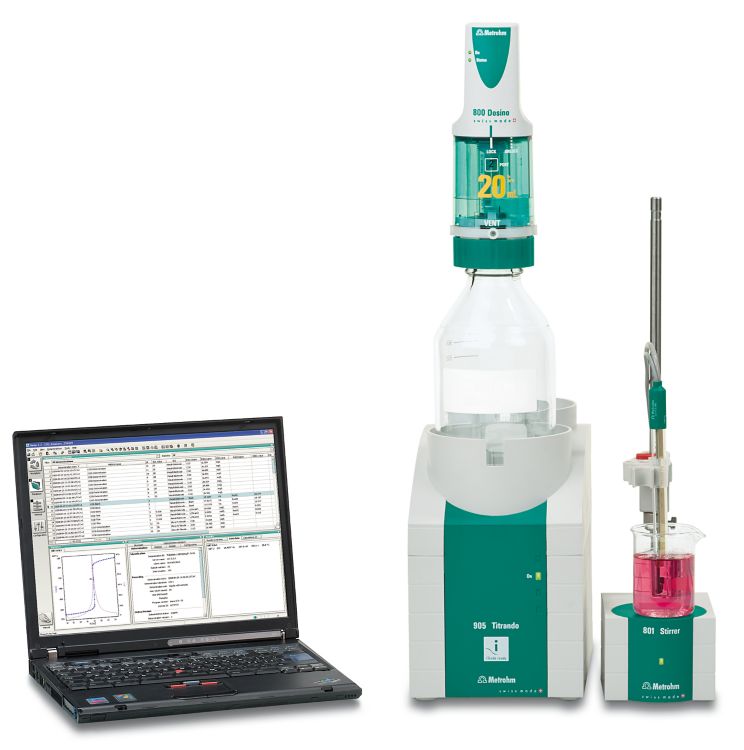Vitamin C, also known as ascorbic acid or L-ascorbic acid, is an essential nutrient involved in the repair of tissues and the enzymatic production of certain neurotransmitters. It is required for the functioning of several enzymes and immune performance, and is also an important antioxidant. This nutrient is found in many foods and is often used as a dietary supplement.
This Application Note describes the photometric determination of ascorbic acid according to the standard ISO 6557-2. To increase the objectivity on the determined equivalence point and the reproducibility of the results, an autotitrator equipped with a photometric sensor, the Optrode, is used. The titrant 2,6-Dichlorophenol-indophenol (DCIP or DPIP) simultaneously serves as titrant and indicator.
The method is demonstrated for orange and blood orange juice.
First, oxalic acid is added to the sample. Afterwards, the sample is centrifuged to remove any pulp.

This photometric analysis is carried out on a 907 Titrando system equipped with a magnetic stirrer and an Optrode for indication purposes.
An aliquot of the prepared sample is added to the titration beaker, followed by oxalic acid. Then, the solution is titrated using standardized 2,6-Dichlorophenol-Indophenol (DPIP) until after the first equivalence point.
The analysis demonstrates acceptable and reproducible results and well-defined titration curves. The results are summarized in Table 1. An example titration curve is displayed in Figure 2.
| Sample | Mean / mg/L | SD(rel) in % |
|---|---|---|
| Orange juice | 363.5 | 1.28 |
| Blood orange juice | 570.8 | 1.29 |
After sample extraction and centrifugation, the vitamin C content in orange juices is easily assessed according to ISO 6557-2 by using DPIP as titrant and a photometric sensor for indication. In this manner, the salmon pink coloration of the endpoint can be reproducibly and objectively determined regardless of the operator and sample color. Furthermore, using a photometric sensor enables the use of an automated system and with that, increased sample throughput.
Internal reference: AW TI CH1-1145-112013
 Share via email
Share via email
 Download PDF
Download PDF